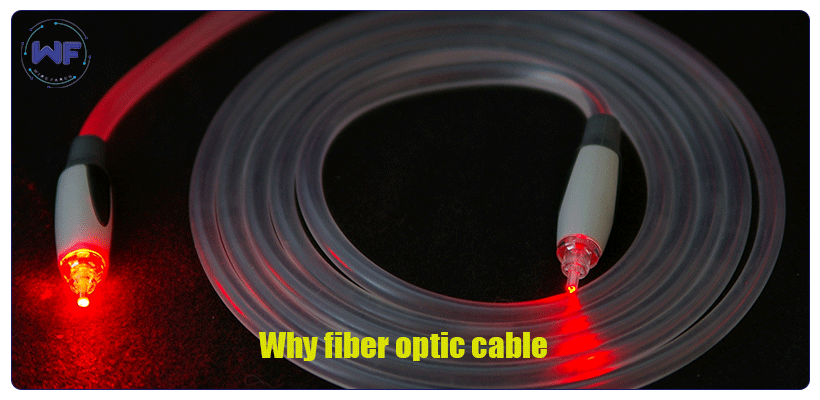Introduction :
In today’s interconnected world, the backbone of our communication infrastructure lies in the remarkable technology of optical fiber cables. As thin as a human hair, these fiber optic marvels have transformed the way we transmit data, revolutionizing industries and enabling lightning-fast, reliable, and long-distance communication. Let’s delve into the fascinating world of optical fiber cables.
The Science Behind Optical Fiber Cable
Optical fiber cables leverage the principle of total internal reflection to transmit data as pulses of light. Each cable consists of a core, clad, and protective jacket. The core, made of highly transparent glass or plastic, guides the light signals. The clad reflects the light back into the core, ensuring minimal loss. Protected by a sturdy jacket, the cable withstands external factors, making it ideal for various environments.
Optical fiber cables operate on the principle of total internal reflection, a phenomenon in which light waves are reflected back into a medium when they encounter a boundary at an angle greater than the critical angle. This principle forms the basis of the science behind optical fiber cables. Here’s an overview of the key elements:
1. Core:
The core is the central component of the fiber optic cable, usually made of high-quality glass or plastic material. It serves as the pathway for transmitting light signals. The core is designed to have a higher refractive index compared to the surrounding medium, which allows for total internal reflection.
2. Cladding:
Surrounding the core is a layer called the cladding. The cladding is made of a material with a lower refractive index than the core. Its purpose is to reflect the light signals back into the core by ensuring that the light waves strike the core-cladding interface at angles greater than the critical angle.
3. Total Internal Reflection
When light enters the core of the optical fiber cable, it encounters the core-cladding interface. If the angle of incidence of the light ray is greater than the critical angle (determined by the refractive indices of the core and cladding materials), total internal reflection occurs. This means that the light is reflected back into the core, allowing it to propagate through the fiber without significant loss.
4. Protective Jacket
: Surrounding the cladding is a protective jacket or coating that shields the fiber from external factors such as moisture, physical damage, and temperature variations. The jacket enhances the durability and longevity of the fiber optic cable.
5. Light Propagation
: Light signals, typically in the form of pulses, travel through the core of the optical fiber cable by undergoing successive total internal reflections. As the light signals bounce back and forth within the core, they can travel long distances without significant attenuation or loss of signal strength.
By leveraging total internal reflection, optical fiber cables can transmit data as pulses of light with minimal loss or interference. This characteristic, combined with the high-quality materials and protective measures, enables optical fiber cables to provide fast, reliable, and high-capacity data transmission, making them the backbone of modern communication networks.
Unmatched Bandwidth and Speed
One of the most remarkable features of optical fiber cables is their enormous bandwidth capacity. These cables can carry vast amounts of data simultaneously, supporting high-speed internet, video streaming, and large data transfers without degradation. With speeds reaching several terabits per second, fiber optic cables outshine traditional copper-based alternatives.
One of the standout features of optical fiber cables is their unmatched bandwidth and speed capabilities. Here’s an explanation of why optical fiber cables excel in these aspects:
1. Broad Bandwidth:
Optical fiber cables offer an incredibly wide bandwidth, which refers to the amount of data that can be transmitted over the cable simultaneously. Unlike traditional copper cables, fiber optic cables can carry a vast number of signals in parallel, allowing for the transmission of large amounts of data concurrently. This expansive bandwidth is essential for supporting modern high-bandwidth applications such as video streaming, cloud computing, and data-intensive tasks.
2. High Speeds:
Fiber optic cables provide unparalleled data transmission speeds. They leverage the use of light to carry information, enabling rapid transmission. Light travels through the optical fibers at extremely high speeds, approaching the speed of light in a vacuum. This allows for data to be transmitted over long distances in mere fractions of a second, resulting in minimal latency and efficient communication.
3. Greater Capacity:
The broad bandwidth and high speeds of optical fiber cables translate into a significantly greater capacity for data transmission. These cables can handle massive amounts of data traffic simultaneously without experiencing congestion or slowing down. This capacity is vital in meeting the ever-increasing demands of modern applications and the exponential growth of data in today’s digital age.
4. Future-Proof Technology:
Optical fiber cables have the potential for even higher speeds and greater bandwidth in the future. As technology advances, new techniques and advancements in fiber optic technology continue to push the boundaries of what is achievable. This ensures that optical fiber cables remain a future-proof choice for reliable, high-speed, and high-bandwidth communication.
In summary, optical fiber cables provide unmatched bandwidth and speed capabilities, allowing for the transmission of large amounts of data at lightning-fast speeds. This feature sets them apart from traditional copper cables and makes them the preferred choice for modern communication networks that require fast and efficient data transmission.
Immunity to Electromagnetic Interference
Unlike copper cables, optical fiber cables are immune to electromagnetic interference. They transmit light signals, eliminating the risk of data loss or degradation due to external factors like electromagnetic fields or radio frequencies. This attribute makes fiber cables ideal for industries where signal integrity is crucial, such as aerospace, healthcare, and financial sectors.
Long-Distance Communication
Optical fiber cables offer unparalleled transmission capabilities over vast distances. With the help of optical amplifiers, data signals can travel for thousands of kilometers with minimal signal loss. This makes fiber optic technology invaluable for long-distance communication, submarine cables, and intercontinental data transfers.
Enhanced Security and Reliability
Optical fiber cables provide enhanced security for data transmission. Since they do not emit electromagnetic signals, they are difficult to tap into, ensuring higher levels of data privacy. Additionally, fiber cables are highly reliable, with lower maintenance requirements and a longer lifespan compared to traditional copper cables.
Conclusion
In the ever-evolving digital landscape, optical fiber cables have emerged as the backbone of our communication infrastructure. Their incredible speed, vast bandwidth, immunity to interference, and long-distance capabilities have revolutionized industries worldwide. As we continue to embrace a data-driven future, the power of optical fiber cables will be indispensable.



3 Responses
That’s really nice.
thank you so much